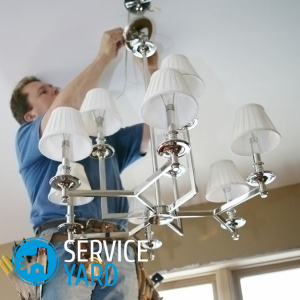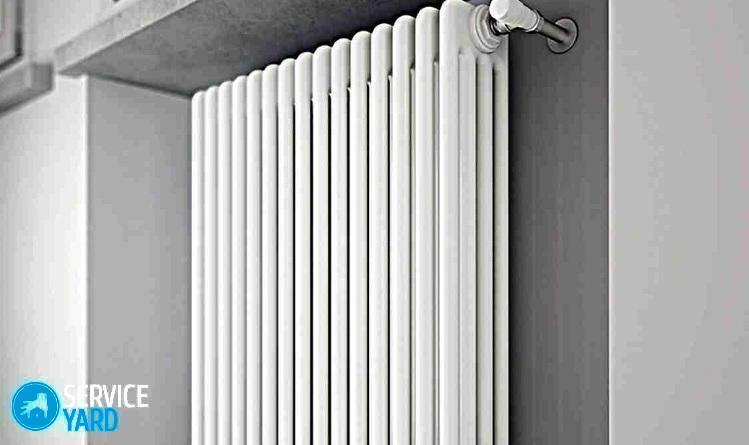Modern kitchen can not be imagined without stretching. This indispensable device not only cleans the room of odors, steam and gas soot, but also extends the life of the kitchen furniture, protecting it from the appearance of a greasy plaque. The device should ideally fit into the interior, but do not rely only on the appearance of the hood. It is important that it has good characteristics - sufficient to effectively update the air in the kitchen.
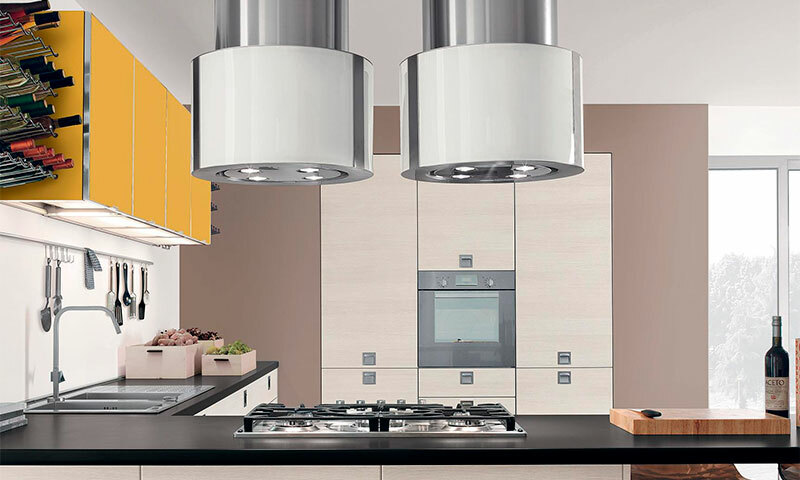
Contents:
- The best manufacturers of kitchen hoods
- The principle of operation and the device of the kitchen hood
- Types of hoods
- Parameters of the choice of kitchen hoods
- Which hood for the kitchen to choose
- The cost of hoods
The best manufacturers of kitchen hoods - which company to choose
A lot of famous brands of household appliances are engaged in productionkitchen hoods, and they are quite widely represented in our market. According to the number of positive customer feedback, technical characteristics, usability and service life, the leaders of this segment are the following brands:
- Bosch
- Maunfeld
- Gorenje
- Asko
- Ardesia
Also read the detailed rating of the best hoods of these manufacturers. In the meantime, we'll figure out how to choose the right technique for your kitchen.
Principle of operation and the device of a kitchen extract
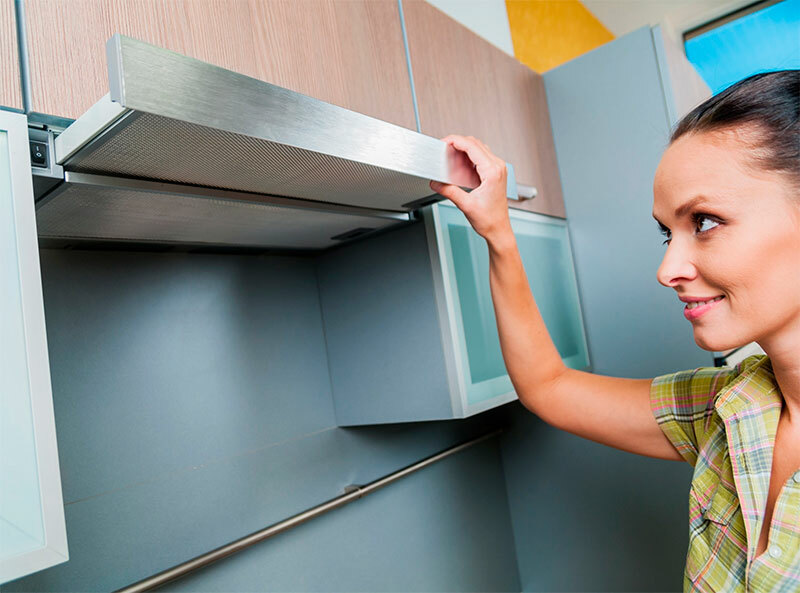
The exhaust hood is a device that catches and removes steam produced during cooking, food and smells of food. The engine of the mechanism starts the fan drawing in the polluted air, drives it through the filter system and outputs it to the vent tube or returns it back to the room.
The classic forced air ventilation device consists of the following elements:
- Body with wide bell;
- Grease grids;
- Additional cleaning filters or vent;
- Electric motor with fan;
- Control unit;
- Built-in lighting.
However, the working principle of the hood may be slightly different, depending on the air discharge scheme implemented in it.
Flow models draw steam and odors through a special air duct( corrugated pipe, plastic or metal box) into the ventilation shaft of the house. Alternatively, the exhaust air can be vented through a hole in the wall directly to the street.
Such hoods are effective and are in great demand due to relative cheapness, high productivity and durability. However, to build in a ready-made interior such a device is problematic, therefore, the installation of the unit should be provided in advance - at the stage of repairing the kitchen.
Recirculation units pass air through themselves, cleaning it with a system of grease traps and carbon filters, and returns back to the room. The main advantage of such hoods is the simplicity of their installation in any point of the kitchen and the relative compactness. Among the shortcomings can be called a lower efficiency( -30% to flow indicators) and the need to regularly change filters.
Combined( universal) hoods combine the advantages of the two previous types - the desired operating mode is simply set by the switch. To clean the air at the time of intensive cooking, you can use a flow system, otherwise there will be enough recycling.
Now many manufacturers are focusing on universal hoods, as the most functional and convenient for everyone.
Types of hoods
In addition to the already considered classification of hoods on the principle of air diversion, there is a more traditional division of this technique - by design type.
Suspended
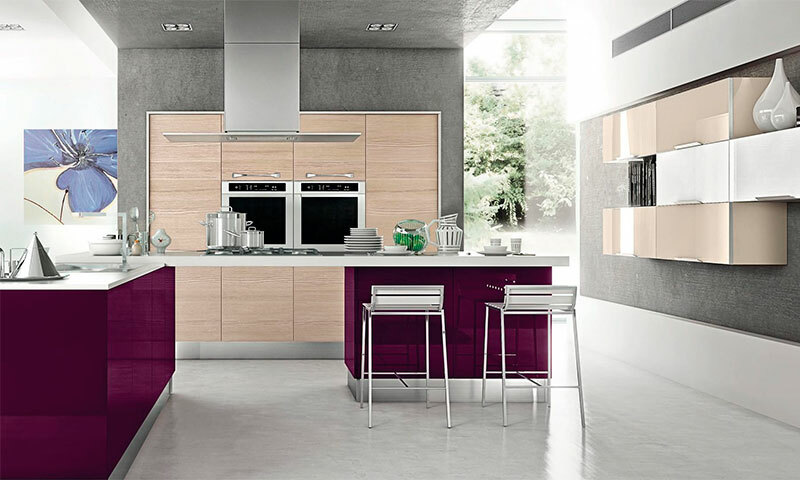
Flat suspension models simply attach to the wall above the plate and do not interfere with the installation of the top cabinet. As a rule, these are combined units, which, if desired, can be connected to ventilation.
Pros:
- Compact size;
- Easy to install;
- Suitable for any modern interior;
- The top cover can be used for storing kitchen small things;
- Affordable price.
Cons:
- Requires regular replacement of filter cartridges;
- Low performance;
- Narrow model range.
Built-in
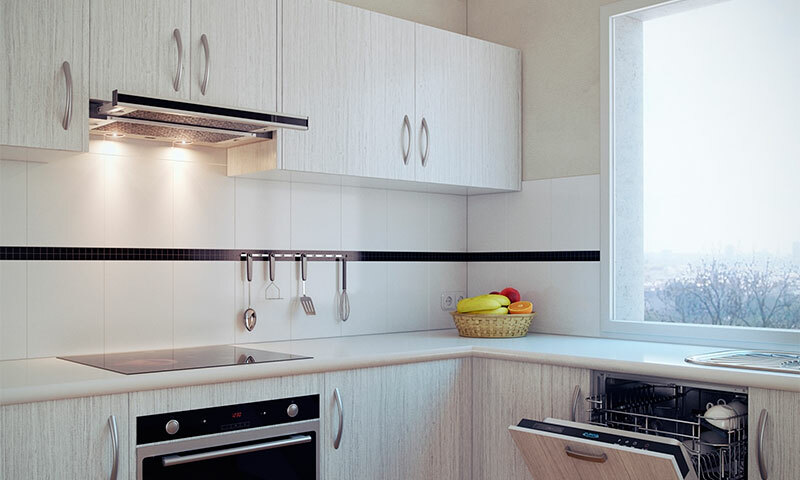
Such hoods are increasingly in demand among buyers, because the hidden technology does not spoil the overall interior and at the same time quietly performs its functions. Embedded models are mounted in a hanging cabinet so that only a narrow strip of the working panel remains in sight.
The principle of air discharge here can be any: recirculation, flow or combined. Among such structures, deviant and pull-out hoods are often found in which the suction area increases.
Pros:
- Save space in the kitchen;
- Invisibility of embedded technology;
- Good air purification efficiency;
- Quite quiet operation.
Cons:
- Low power.
Dome( fireplace)
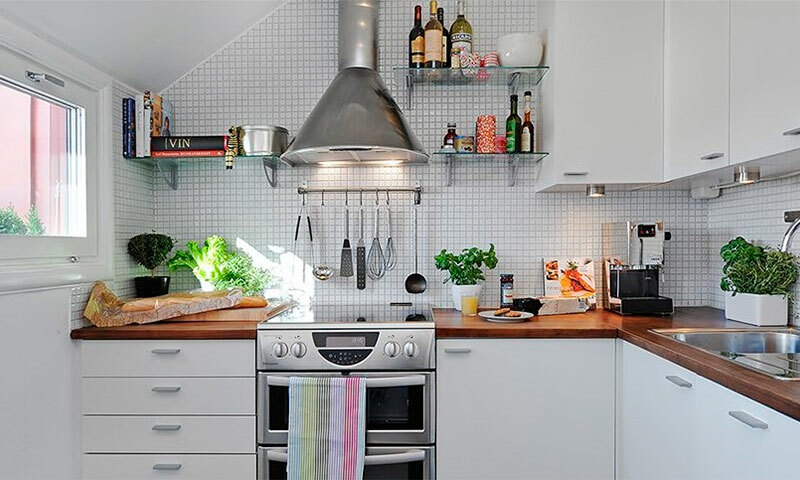
Get their name for the similarity with the truncated cone of the classic fireplace vault. Initially, these were quite large devices, but today the manufacturers produce a lot of T-shaped island, as well as inclined hoods, which are also domed, although outwardly differ from their predecessors.
All fireplace models operate on the principle of full air bleeding, although expensive appliances are additionally equipped with a recirculation function. In any case, these are always quite powerful high-performance units. Depending on the shape of the umbrella, the technician can be installed near the wall, in the corner and even under the ceiling.
Pros:
- Effective air purification;
- High performance;
- Rich functionality;
- A variety of design solutions and models.
Cons:
- Bulk;
- Need to install a vent box;
- Relatively high cost.
Parameters for selecting cooker hoods

Productivity
The main indicator of the efficiency of the device is the air volume, which the device manages to withdraw per unit of time( measured in m3 / h).
To determine what type of hood is suitable for your kitchen, you need to calculate the cubature of the room and multiply it by 12 - that is how many times the air needs to be updated for 1 hour at the request of sanitary norms.
The resulting figure should be multiplied by a safety factor of 1.3, if the duct works on the ventilation shaft, and by 1.1 - if you just need to lay a little more power. This will allow the vehicle to be used at medium speed without loss of efficiency.
Size
At first glance, the more the hood, the better. But too cumbersome option is unlikely to decorate the interior, and even steal a lot of useful space above the oven. Here it is necessary to proceed from the dimensions of the hob - the socket of the kitchen hood should correspond to its width.
For compact three-plate cookers and dominoes, a small 45 cm model will suffice, a traditional ventilation oven with a bell of 60 cm is suitable for traditional 4-burner ovens. For large panels for 5 or more burners produce hoods from 90 to 120 cm wide.
Control method
Modern air cleaners provide for 2 control options: mechanical and electronic. The first is carried out by means of buttons or the slider, the second - by a sensor or a pseudo-sensor.
Mechanical aggregates are cheaper than their electronic counterparts, but people of the age are much more accustomed to using buttons than imperceptible sensors. The most heaped models suggest control using a remote control.
Body Material
The material from which the air cleaner body is made depends on the service life and the features of the maintenance of the equipment. The main criteria to be preferred are practicality and durability.
Modern manufacturers offer us these options:
- Enamelled steel is the most unpretentious, easy to clean and inexpensive.
- Stainless steel - looks stylish and expensive, but requires constant care and all the time "pleases the eye" fingerprints.
- Plastic - a low-cost and rather quiet option, but its service life is much lower than that of metal cases.
- Tempered glass - in the interior looks luxurious and even futuristic, but like stainless steel, it gives a lot of problems in the care.
Filters
Filters in air cleaners are installed in 2 types: grease and fine cleaning.
The first is a metal mesh on which the particles of hot fat condense from the air. It is easy to remove and wash, and then put it back in place.
Recently, along with such grease traps began to appear and acrylic grids( most often in inclined models), but they are not subject to cleaning and require regular replacement.
"Thin" filters containing ground activated charcoal are designed to eliminate smells of food and smoke. This is an expendable material that requires replacement on average every six months.
Noise level
The noise output of an exhaust system is an important indicator, especially for a small kitchen or a combined kitchen. In order not to exceed the permissible values of 40-50 dB, do not take too much for your room hood.
Be sure to check the technical documentation before buying, so as not to run into a loud-speaking assistant, and at the same time ask the store to turn it on second or third speed.
If you need a powerful model for a large kitchen, look for the unit in a plastic sound-absorbing housing or just with two motors.
Backlight
This function is present in almost all modern hoods, but it is not always implemented correctly. The brightest light is provided by halogen and LED bulbs - they are also the most economical. With this backlight, you'll be able to see the cooking well even with the top lights off.
With fluorescent light bulbs, you should be more careful - you can easily make mistakes with the real color of the dishes, for example, when assessing the degree of frying of meat or baking. From incandescent lamps and it is better to give up - they are "gluttonous" and heat heavily, because of what often plastic lights are melted.
Additional functions
Extracts with electronic control offer a wide range of useful functions. Do you need them - decide for yourself, because the extra options not only simplify the work with the device, but also significantly increase its cost.
For today the most popular are such variants:
- Automatic start and change of speeds. The sensor integrated in the housing reacts to the level of air pollution and independently selects the appropriate operating mode.
- The filter indicator - will warn of its filling and the need for an early replacement.
- Residual stroke - in this mode the fan will continue to work slowly for another 10-15 minutes after turning off the equipment to completely eliminate all odors.
- Interval switching on - the unit periodically starts up by itself, updating the air in the kitchen.
- Timer - allows you to set the time for automatic switching on or off of the hood.
Which hood for the kitchen to choose
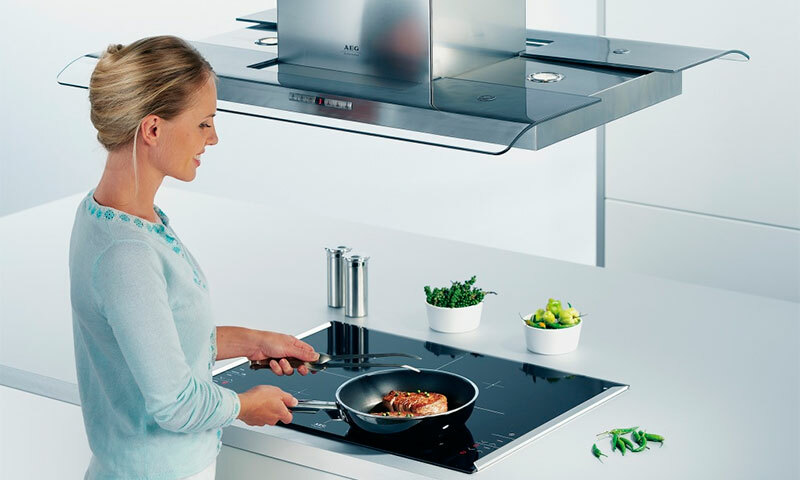
1. In a small kitchen up to 16 m2 with a stove at the wall and free access to the general ventilation system, a suspended or built-in flow-through hood with a capacity of up to 500 m3 / h is suitable. If you can not make an airway, buy a circulation model.
2. For a medium-sized kitchen up to 28 m2 with a hob near the wall, where it is easy to connect to the ventilation shaft, you can choose a dome hood with a full air outlet and a capacity of 500-1000 m3 / h.
3. For a large and spacious kitchen area of more than 28 m2 with a cooking zone in the center you need an island combined extractor capacity of at least 900 m3 / h.
Cost of extraction equipment
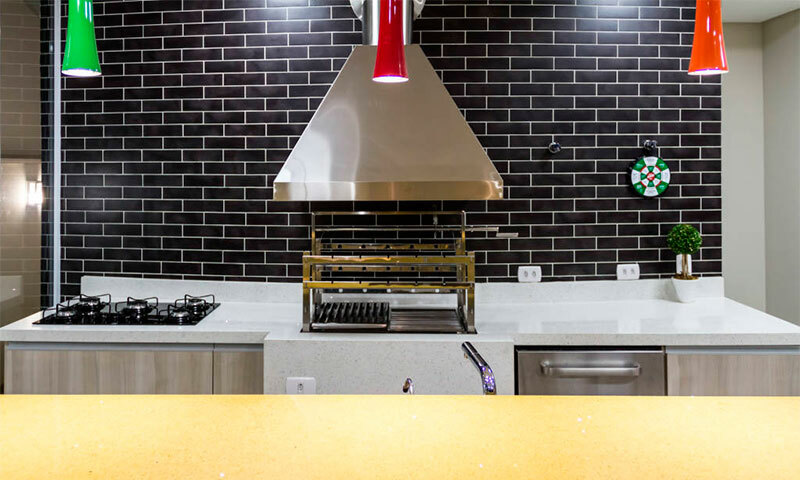
1. Suspension model with mechanical or electronic control can be purchased at a price from 1700 to 12000 rub.
2. Dome hood, which works only for the bend, will cost from 1800 to 28 thousand rubles, the ceiling for the combined model - 150 thousand.
3. The cheapest sloping hood will pull by 3700-4000 rubles, the upper limit reaches 265 thousand.
4. Island models are the most expensive - from 10 to 320 thousand rubles.
5. Built-in equipment will not be cheaper than 2500, the price ceiling is kept at the level of 290-300 thousand rubles.

